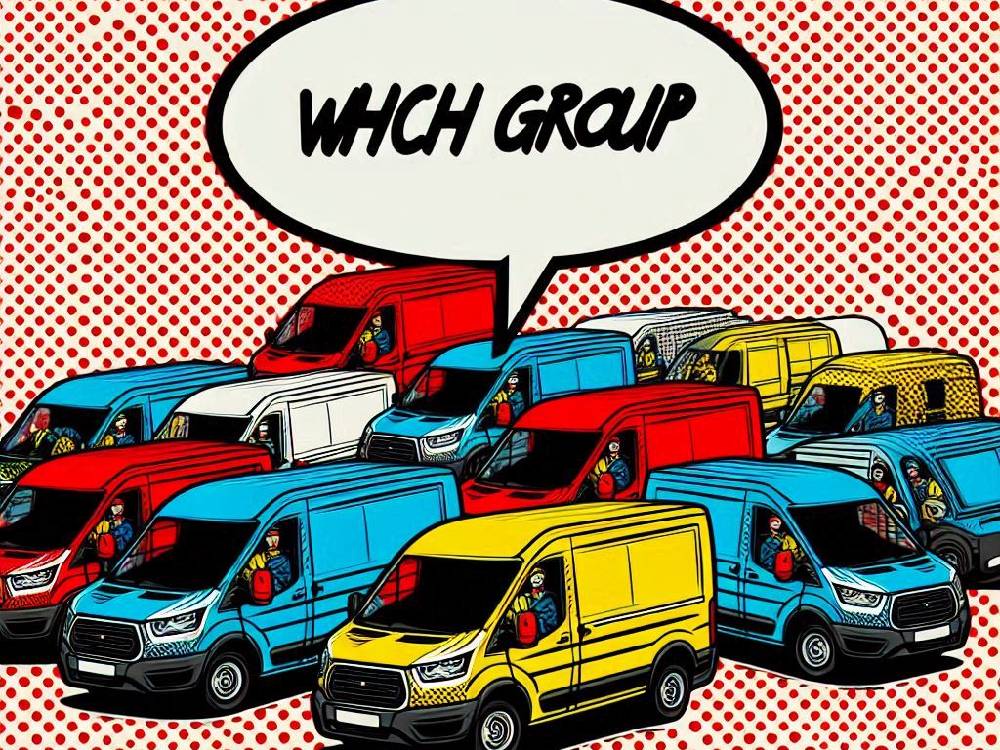Introduction
Cheap Van Insurance.
Finding affordable van insurance in the UK can be challenging.
But there’s good news.
Understanding how insurance groups work can help you save money.
Each van model is assigned to a specific insurance group.
Why does that matter?
It helps insurers determine the relative risk of covering that vehicle.
The lower the group, the cheaper your van insurance is likely to be.
That’s important to know, right?
What Are Van Insurance Groups?
The Association of British Insurers (ABI) has a system for categorising vans.
It’s called the Group Rating System.
What does it do?
It assigns every van and light commercial vehicle (LCV) to a group, based on its relative risk.
The lower the insurance group, the less it costs to insure your van.
Why should you care?
Because understanding which group your van falls into can save you money.
But don’t forget.
Your van’s group is only part of the equation.
Other things matter too, like your personal driving history, modifications to your van, and even where you park it.
Here’s the deal.
Checking a van’s insurance group before purchasing is a smart move.
It helps you estimate costs and avoid nasty surprises.
Vans are split into 50 groups, with lower groups costing less to insure.
Insurers factor in your van’s group, but they also look at things like the van’s value and modifications.
Checking your van’s insurance group early helps you gauge potential costs.
Want to reduce your insurance premiums? Click here.
How Do Van Insurance Groups Work?
Here’s where it gets interesting.
If your van was made before 2016, it will fall into one of 20 groups.
The lower the group, the cheaper your insurance.
But here’s the twist.
Vans produced after 2016 are grouped differently.
They now fall into groups numbered 21 to 50.
So what does that mean for you?
Vans in group 21 (post-2016) typically have lower premiums.
On the flip side, vans in group 50 are considered high risk and will cost more to insure.
But here’s the thing.
Don’t make the mistake of choosing a van based only on its insurance group.
Why?
Because insurers consider other factors too—like claims history and custom modifications.
So, what’s the takeaway?
Always compare quotes from different insurers to find the best deal.
Compare van insurance options here.
How Are Van Insurance Groups Decided?
So, how do insurers decide which group your van belongs in?
It’s all about the van’s characteristics.
Let’s break it down.
The Size and Weight of the Van
Big vans carry big risks.
Why?
Because they’re more likely to cause serious damage in an accident.
That’s why heavier vans are placed in higher insurance groups.
Performance and Engine Size
Vans with larger, more powerful engines tend to cost more to insure.
It’s simple.
The more powerful the van, the greater the risk, and the higher the insurance group.
Security Features
Want to lower your insurance group?
Make your van more secure.
High-security door locks, immobilisers, and alarms can make a big difference.
The more secure your van is, the less you’ll pay.
Check out these tips to secure your van.
What Insurance Group Is My Van In?
Now, let’s move on to the crucial question.
How can you find out which insurance group your van falls into?
Fortunately, it’s quite simple.
By using the Thatcham Research vehicle search tool, you can quickly identify your van’s insurance group based on factors like the make, model, year, and fuel type.
But that’s not all.
The tool also provides a letter, which gives insight into your van’s security level.
Here’s how it breaks down:
- A: Meets the security standard for the group.
- D: Falls short of the standard, so the group rating is increased.
- E: Exceeds the security requirement, thus lowering the group.
- P: Provisional rating, used when the necessary data was incomplete.
- U: Unacceptable security, meaning insurers might require upgrades.
- G: This applies to imported vehicles, with group ratings only applicable to UK models.
So, how does this help?
When you purchase van insurance, your insurer will automatically have this information.
You don’t need to worry about providing the group yourself.
Find out more about van insurance groups here.
What Else Will Influence The Price Of My Van Insurance?
While your van’s insurance group plays a significant role in determining your premium, it’s not the only factor.
In fact, several other elements come into play when insurers calculate how much you’ll pay for coverage.
Let’s take a closer look at these additional factors.
Your Age
To begin with, your age is a big consideration.
Typically, if you’re under 25, you’ll face higher premiums.
Why?
Because younger drivers are statistically more likely to be involved in accidents.
Your Address
Next, your location is another critical factor.
Living in an area with a higher crime rate can increase your premiums, as the risk of theft or damage to your van is higher.
On the other hand, if you live in a safer, low-crime area, you may benefit from lower insurance costs.
Your Occupation
Your job also influences your insurance premium.
For instance, high-risk occupations—such as those involving manual labour or extensive driving—can result in higher insurance costs.
In contrast, lower-risk professions may lead to cheaper premiums.
Your Driving History
Another major factor is your driving record.
Any claims or accidents in your past will likely increase your insurance premiums.
However, if you have a clean driving history or have built up a no-claims discount (NCD), you could see a substantial reduction in your insurance costs.
Where You Park
Where you park your van is also important.
If you park in a secure place, like a private driveway or garage, your premiums could be lower.
Conversely, parking your van on the street might increase your insurance costs.
Your Van’s Modifications
It’s also important to consider any modifications to your van.
Certain modifications—like adding extra security features—can reduce your premiums.
However, cosmetic changes or performance upgrades could increase your costs.
Annual Mileage
Finally, your annual mileage plays a role.
The more you drive, the higher the risk of accidents, which results in higher premiums.
If you drive less, you could save on insurance costs.
For more on what influences van insurance prices, click here.
Conclusion
So, what can you do to keep your van insurance premiums down?
While choosing a van in a lower insurance group is a good start, there are additional strategies to help you save money.
Let’s go through a few key tips.
Improve your van’s security.
Pay annually.
Paying your premium in one lump sum is usually cheaper than paying monthly installments.
Limit your mileage.
Take an advanced driving course.




